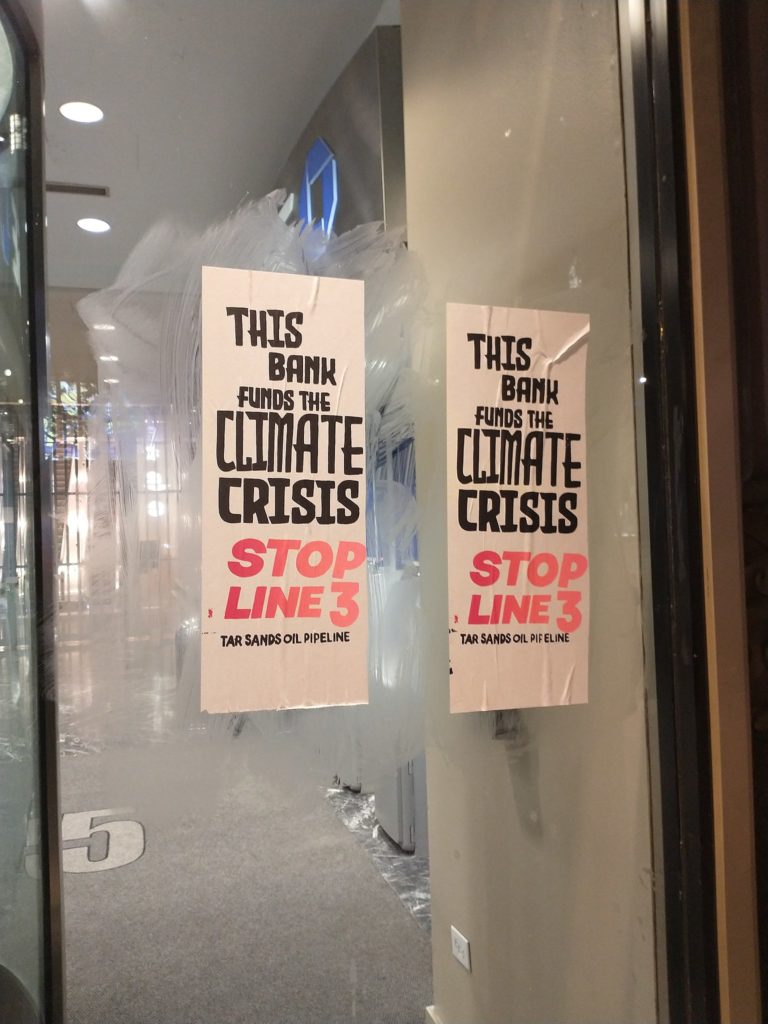In March of 1991, an unusual sight could be seen on the frozen Prairie river in Minnesota: pools of oil flowing down the ice and seeping into the river. This was Enbridge’s Line 3 spilling 1.7 million gallons of crude oil. Now, indigenous and environmental activists worry that this may happen again. Enbridge, the company that owns Line 3, has plans to replace and expand parts of the Line 3 pipeline to restore its original operating ability.
The Line 3 pipeline runs from Hardisty, Alberta to Superior, Wisconsin, spanning 1,097 miles. Due to safety concerns, the capacity of the pipeline was reduced over time, but in 2014 Enbridge proposed plans to build new pipelines that will restore the line to its historic operating capacity- 760,000 barrels of oil per day. If fully constructed, this would be Enbridge’s largest project and one of the longest oil pipelines on the continent. All new segments of the pipeline have been built except for 337 miles of a 36-inch diameter pipeline which will replace 282 miles of a 34-inch diameter pipeline in Minnesota by using a different route. The company says that this final section in Minnesota is 80% complete, and they are on track to finish the entire project by the end of this year.
This pipeline has faced much opposition from environmental awareness groups and Native American communities. Line 3 will be transporting oil from the tar sands of Alberta. The process of extracting tar sands oil is different from the process of extracting conventional crude oil, and in many ways, it is more environmentally damaging. Converting tar sands oil to gasoline is more difficult in contrast to crude oil due to the process using roughly three times the amount of water that regular oil does. This gasoline emits 15% more carbon dioxide than gasoline made from normal oil, and if it spills, tar sands oil is more difficult to clean up than non-tar sands oil.
Oil is the most commonly spilled substance from pipelines, and environmental activists argue that if the new pipeline is made operational, it is a matter of if, not when, it will spill. Oil spills cause large amounts of damage to the waterways, forests, and wildlife surrounding it, and it would also threaten the food and water resources of indigenous tribes that live in the area. Oil spills also take billions of dollars and large amounts of time and resources to clean.
A project summary report on Line 3 from Enbridge says that “As part of our commitment to the safe and responsible operation of our pipelines, we employ comprehensive preventative measures.” These safety measures include anti-corrosion coating on pipes, pressure testing, and automatic shut-off valves. However, Enbridge has a checkered past related to oil spills. The original Line 3 pipeline has spilled numerous times before, which includes the 1991 spill- the worst inland oil spill in US history. Enbridge also owned the pipeline responsible for the second-largest inland oil spill in US history. This spill occurred in 2010 when over a million gallons of crude oil from Enbridge’s 6B line spilled in waterways in Michigan. It took Enbridge 17 hours to respond to the leak, which raises concerns over whether Enbridge has the capacity to respond to and clean oil spills, and also monitor their pipelines.Environmental and indigenous groups such as the Red Lake Band of Chippewa Indians, the White Earth Band of Ojibwe, the Sierra Club, and Honor the Earth have appealed to courts to repeal the permits granted to Enbridge by the Minnesota Public Utilities Commission, saying that there was not sufficient demand for the oil the pipeline would carry. However, Minnesota courts have denied their requests.
Many of these groups are also leading protests, and some have taken direct action by protesting on construction sites where pipes are being laid. Over 600 people have been arrested, and police have used tactics such as chemical irritants and rubber bullets to keep protesters from entering Enbridge’s private property. Enbridge has also paid law enforcement $750,000 for policing the pipeline construction area.
Time is running out for the activists who are trying to stop the pipeline, but there are ways that you can help. The organization Stop Line 3 has petitions and information on ways to get involved. You can find the link to this site and more in the call to action section.

